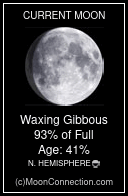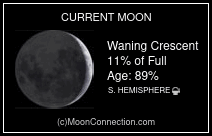Love Spells and Potions through History
Love spells and charms are a universal phenomenon throughout human history- from ancient times, when love and fertility were both considered whims of the gods who could be cajoled and appeased, to modern times, where many look for a little assistance in making a love connection. Charms
The sympathetic charm, usually in symbolic form, is used to attract a lover. Objects suggestive of anatomical shapes, oils and plants associated with love goddesses, parts from animals, etc., are believed to have power and potency. These charms and potions are a type of sympathetic magic, where it is believed that something that resembl;es another thing bears a magical relationship to that thing. It is one of the oldest and most widespread human beliefs. The choice of symbols used in sympathjetic charms varies according to culture, personal preference, and circumstance.
Medieval magicians fashioned charms resembling the labrys, or two headed axe, an ancient symbol of the female sex organs. The Mandrake, whose root often resembles male genitals, was prized as an aphrodisiac – so much so that it was called “Circe’s plant,” after the infamous sorceress who enslaved men. In Indonesia, a popular charm is the coco-de-mer, a nut related to the coconut that bears a striking resemblance to female anatomy.
Love potions and aphrodisiacs
The quest for the perfect, never fail love potion is an ancient one…in the second century, the philosopher Apuleius was accused (and acquitted) of using a love potion to attract his wealthy wife. Love potions have been the staple commercial product of folk magicians and quacks for millennia. Some concoctions were simple aphrodisiacs, herbal recipes with varying physical effects. Some were disgusting, or even dangerous, composed of oils, animal parts, strong spices, and even drugs and toxins. Modern versions of these ancient formulas, often just as dubious in efficacy as their ancient counterparts, can be purchased via mail order or even from the neighborhood pharmacy, although instead of magical claims, they make scientific sounding promises.
Spells
Even today, the most popular services of the witch-for-hire is the love spell. Many spells are based on ages old practices- charms to be worn on the body or placed near the bed, paper spells invoking saints, Gods, or angels, or making incantations over foods to be eaten by the intended. A common Wiccan spell involves burning candles with human shapes or anointed with oils, which are moved toward one another while a simple chant is performed. American folk magic remedies include commercial preparations like ‘come back oil,’ a cheaply scented pink concoction meant to ensure the return of a straying lover. Manipulation and Control
Many love spells are meant to influence or control an individual. Usually composed of items with personal significance, they may incorporate the hair, nail clippings, bodily fluids or personal property of the desired companion. Despite the dubious ethical implications of trying to coerce another person, these types of magical manipulations are all too common. Some are relatively harmless charms, such as the medieval tradition of giving the intended a piece of fruit which has been chanted over. More ethically dubious spells may include elaborate rituals to ensure the loyalty or love of a person, to break up a marriage, or to get revenge on a cheating spouse. Most modern magical traditions take strong stances against interfering with the free will of another person, but as long as there is money in exploiting the desperate and lovesick, there will always be plenty of love spells available for the right price
Love spells and charms are a universal phenomenon throughout human history- from ancient times, when love and fertility were both considered whims of the gods who could be cajoled and appeased, to modern times, where many look for a little assistance in making a love connection. Charms
The sympathetic charm, usually in symbolic form, is used to attract a lover. Objects suggestive of anatomical shapes, oils and plants associated with love goddesses, parts from animals, etc., are believed to have power and potency. These charms and potions are a type of sympathetic magic, where it is believed that something that resembl;es another thing bears a magical relationship to that thing. It is one of the oldest and most widespread human beliefs. The choice of symbols used in sympathjetic charms varies according to culture, personal preference, and circumstance.
Medieval magicians fashioned charms resembling the labrys, or two headed axe, an ancient symbol of the female sex organs. The Mandrake, whose root often resembles male genitals, was prized as an aphrodisiac – so much so that it was called “Circe’s plant,” after the infamous sorceress who enslaved men. In Indonesia, a popular charm is the coco-de-mer, a nut related to the coconut that bears a striking resemblance to female anatomy.
Love potions and aphrodisiacs
The quest for the perfect, never fail love potion is an ancient one…in the second century, the philosopher Apuleius was accused (and acquitted) of using a love potion to attract his wealthy wife. Love potions have been the staple commercial product of folk magicians and quacks for millennia. Some concoctions were simple aphrodisiacs, herbal recipes with varying physical effects. Some were disgusting, or even dangerous, composed of oils, animal parts, strong spices, and even drugs and toxins. Modern versions of these ancient formulas, often just as dubious in efficacy as their ancient counterparts, can be purchased via mail order or even from the neighborhood pharmacy, although instead of magical claims, they make scientific sounding promises.
Spells
Even today, the most popular services of the witch-for-hire is the love spell. Many spells are based on ages old practices- charms to be worn on the body or placed near the bed, paper spells invoking saints, Gods, or angels, or making incantations over foods to be eaten by the intended. A common Wiccan spell involves burning candles with human shapes or anointed with oils, which are moved toward one another while a simple chant is performed. American folk magic remedies include commercial preparations like ‘come back oil,’ a cheaply scented pink concoction meant to ensure the return of a straying lover. Manipulation and Control
Many love spells are meant to influence or control an individual. Usually composed of items with personal significance, they may incorporate the hair, nail clippings, bodily fluids or personal property of the desired companion. Despite the dubious ethical implications of trying to coerce another person, these types of magical manipulations are all too common. Some are relatively harmless charms, such as the medieval tradition of giving the intended a piece of fruit which has been chanted over. More ethically dubious spells may include elaborate rituals to ensure the loyalty or love of a person, to break up a marriage, or to get revenge on a cheating spouse. Most modern magical traditions take strong stances against interfering with the free will of another person, but as long as there is money in exploiting the desperate and lovesick, there will always be plenty of love spells available for the right price















0 comments